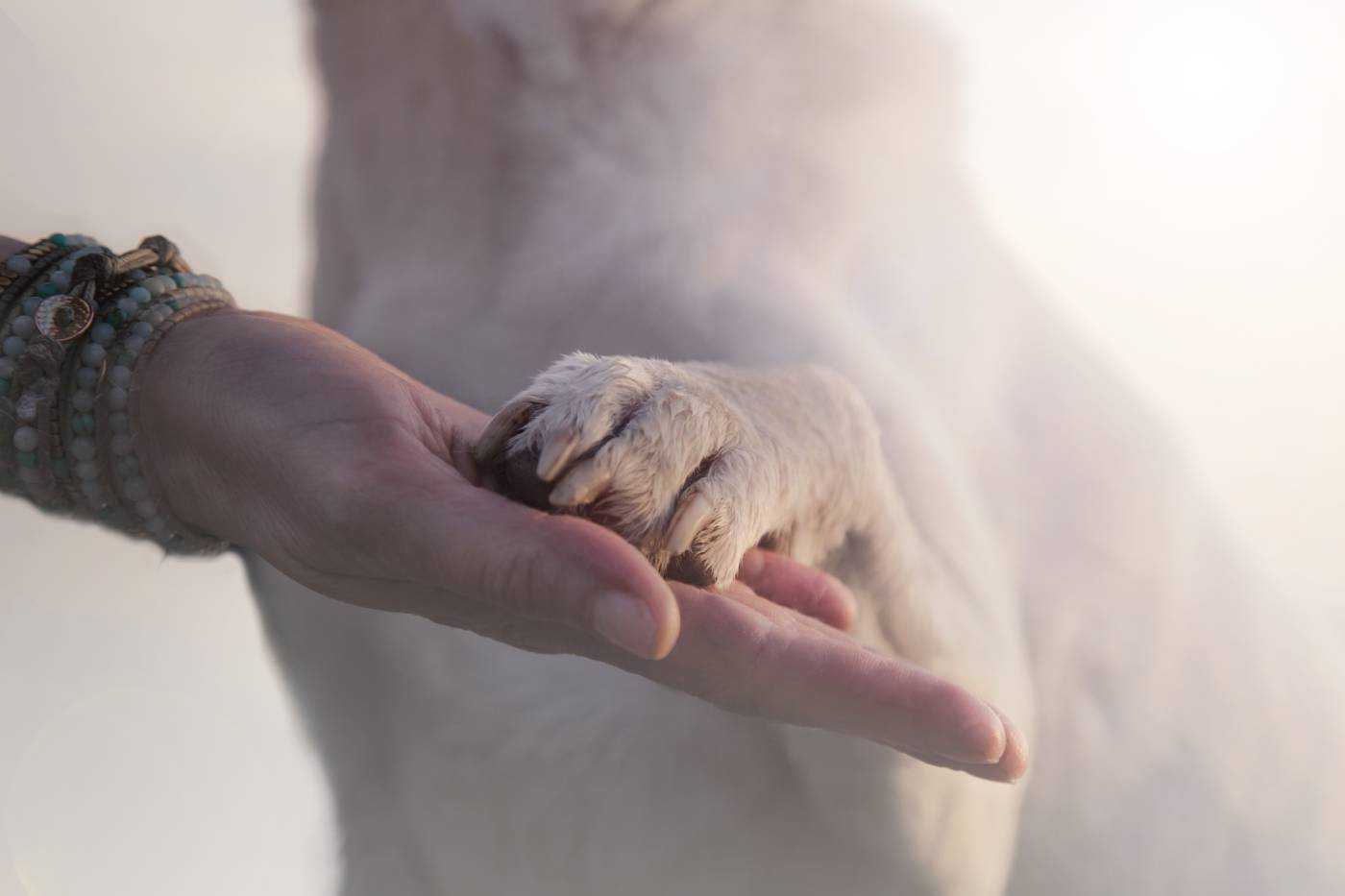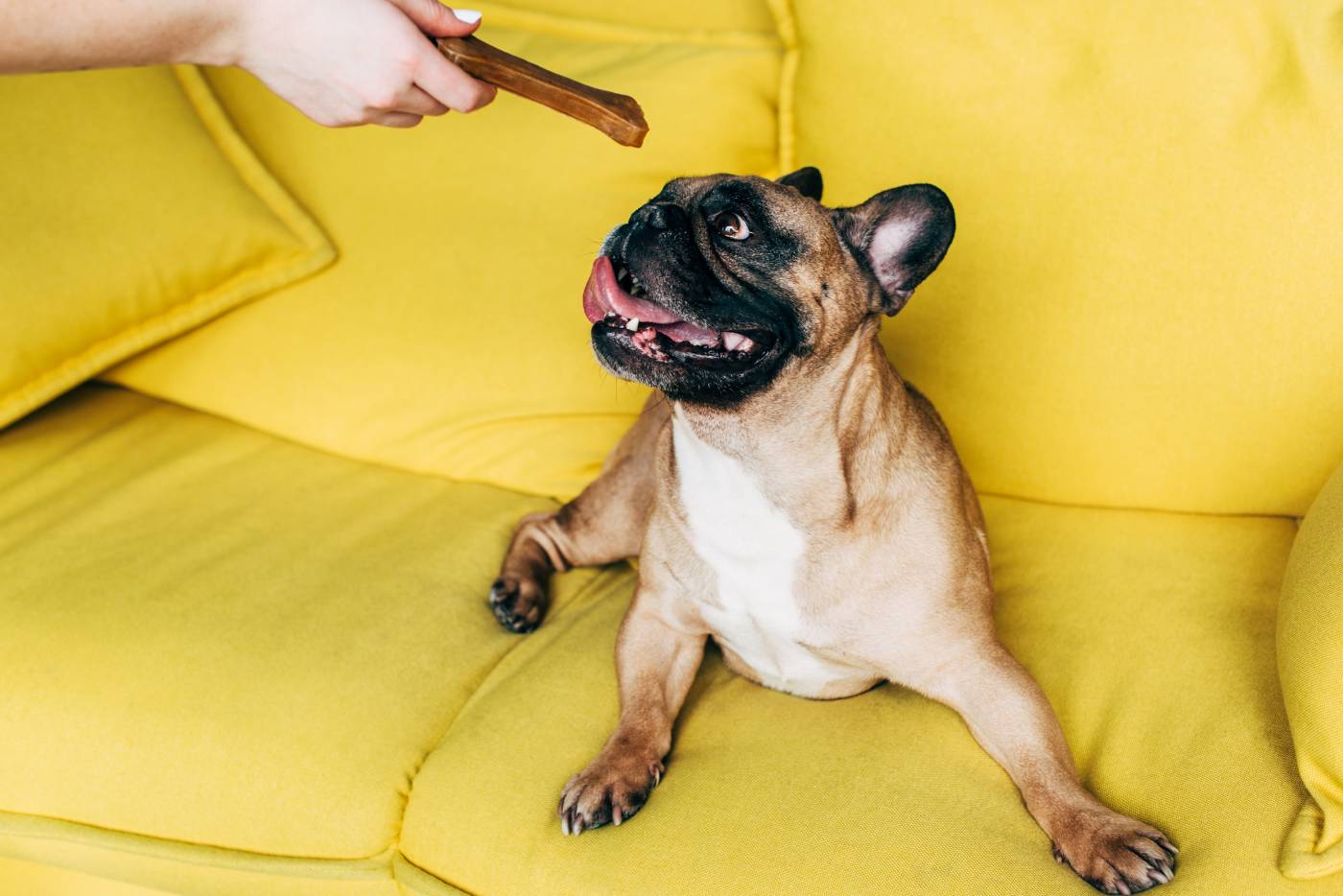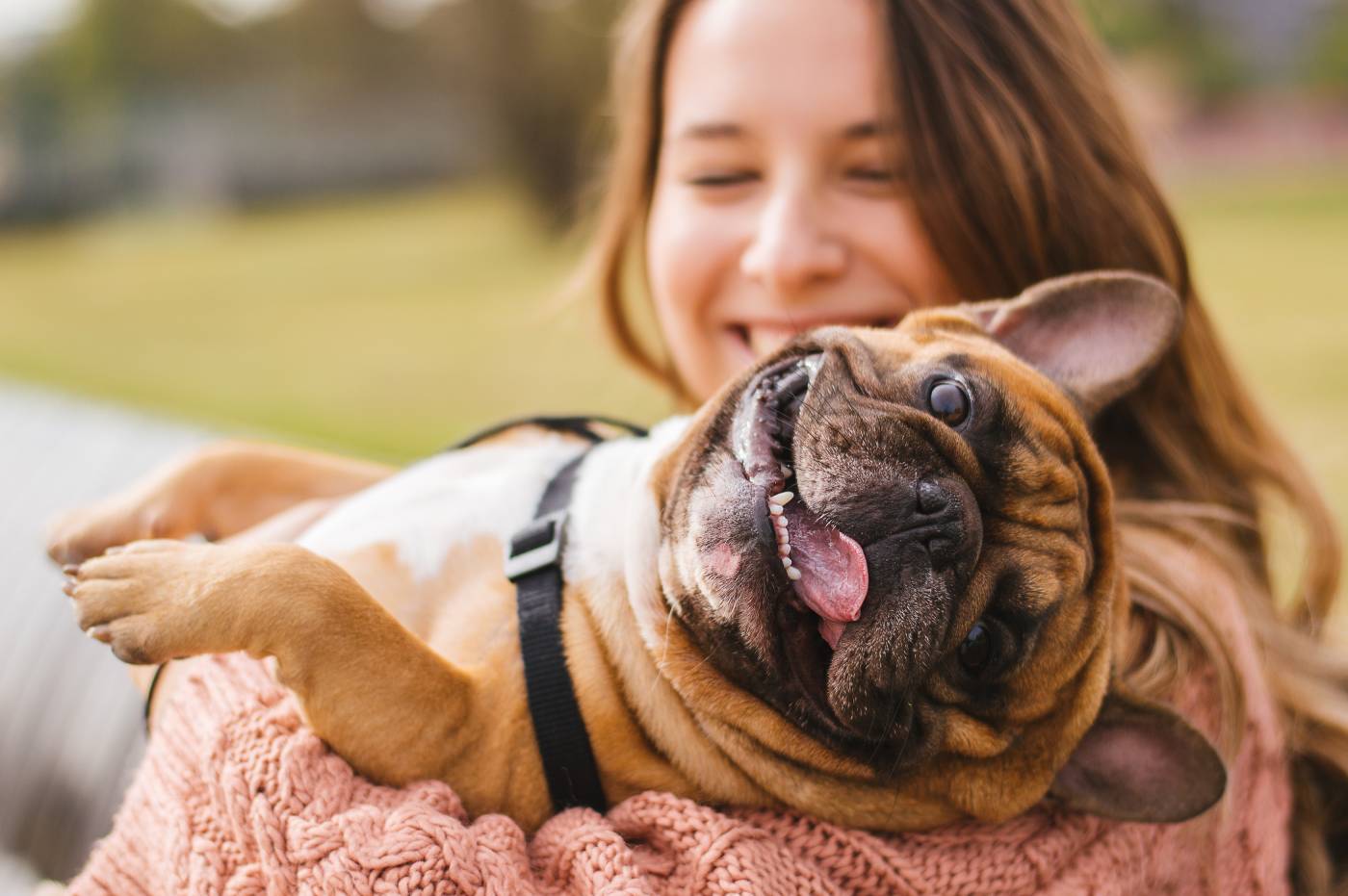Tricks should be both useful and fun for every dog and dog owner. Trick training is one of the best parts of dog training because there are no specific criteria for your dog to meet, and the training process is based on games. Trick training develops your dog’s self-confidence and intelligence, as well strengthens the bond between human and dog as you spend time together.
So, how do you teach your dog tricks?
First of all, trick training should be enjoyable for both you and your dog, and second, it should be based on positive reinforcement. As long as you’re focused on those two things, dogs become cheerful, energetic, and obedient. During training, we give the dog a chance to win again and again, interact with us, and control their part of the work – all of which helps your dog learn and grow.
How do you start teaching your dog tricks?
As a rule, trick training starts with familiarizing your dog with targets. Your palm, for example, can be a target.

Your dog can touch the target with their nose, paws, or tail (depending on a trick).
It is important to teach your dog to follow your palm without constantly poking their nose into it. For example, when you teach your dog to move backwards, you don’t want your dog to move forward, poking their nose into your palm.
What tricks should I start training my dog with?
As a rule, the simplest tricks your dog can learn pretty quickly are:
- Left and right spin
- Sit-stand-down complex
- Weave
- Give paw
- Move backwards
- Roll over
You can even teach a puppy these tricks.
Shaping is also very beneficial when teaching your dog tricks. It’s very likely that your dog will offer you new tricks on their own or will modify existing ones during the training session. You’ll probably like a lot of these updates!
You can combine single tricks into various performances going all the way up to circus-level! You are only limited by your imagination and your dog’s physical abilities.
There’s a classic four-step model for teaching almost any command.
- Lure your dog with a treat in your right hand. Give your dog the treat from your right hand.
- Lure your dog with a treat in your right hand, but this time give your dog a treat from your left hand.
- Lure your dog with your empty right hand, but with your hand closed so it looks like there’s a treat inside it. Reward your dog from your left hand. Introduce a verbal cue in this stage.
- Give your dog a verbal cue. At the same time, your empty right hand doesn’t lure your dog; you only gesture to your dog. After your dog follows your command, you give them a treat from your left hand.
What types of rewards should you use for teaching tricks?
They say that a reward always means a treat. While treats can be a good choice, they’re not the only option.

A reward is something that a dog wants right here and right now. We recommend:
- Treats. The major advantages to treats are that you can give them instantly, and all dogs love tasty food. It is important, however, to choose treats your dog really likes, since different dogs like different snacks. The treat should be soft, quite small in size, and easy to chew and swallow.
- Toys. It is better to use the toy as a reward when your dog already understands what is required from them; that is, use it when you consolidate the skill. Keep in mind that toys may overly excite your dog.
- Petting. Positive emotions from a person allow the pet to divert their attention from the task that they were performing. You can pet your dog as a reward when they perfectly know what you want from them and when they are happy to perform a trick. You can also pet your dog when you take a break during a training session and when you see that your pet is tired.
- Games (for example, tug of war). Playing with you brings more joy to your dog than when you simply offer them a toy to play with on their own.
Should you use verbal praise when teaching your dog tricks? Well, it depends on how you praise your dog. If you monotonously and unenthusiastically say “well done,” your dog is very unlikely to understand that you are satisfied with their performance.
Only enthusiastic and cheerful sounds can attract your dog. If your dog looks at you, wagging their tail and smiling, it means that they accept your praise.
Keep in mind that different dogs react differently to the intensity of praise. Some are very happy even after a neutral “good job,” and some barely react to the most joyful and active praise.
When teaching your dog tricks, it is extremely important to mark your dog’s correct behavior in a timely way; this is why some people use clickers.
It is always unacceptable to use inhumane methods or inhumane dog gear, like aversive, shock, and/or choke collars.
Some dog owners rationalize this choice by saying things like “I’ve tried positive reinforcement, but it doesn’t work.” If you want positive reinforcement to be effective with your dog, make sure you set yourself and your dog up for success.
6 necessary conditions for successful trick training
To teach your dog new tricks, the following conditions must be met.
- Your dog should be hungry. Of course, we’re not talking about neglecting your dog for several days at a time. We mean that if you train in the morning, for example, feed your dog only 30-50% of their breakfast and give them the rest during your training session. If your dog is too hungry, they will only think about how to get food and will not be able to focus on training.
- The training location should be familiar to your dog. This way, your dog feels more comfortable and learns better.
- There are no strong stimuli around. It is hard for a dog to focus on training in a place that’s full of distractions.
- You walked with your dog during the day, but they are not too tired.
- You have a plan for your training session.
- You know and work with your dog’s individual characteristics.
Top 5 trick training mistakes
- An incorrect choice of the reward (your dog doesn’t want what you offer them at this very moment).
- A lack of plan. You must always keep the next step that you will reinforce in mind.
- Late reinforcement. In this situation, your dog simply won’t understand what you are rewarding them for, which means that they will not learn what you expect from them.
- Unnecessary movements that prevent the dog from understanding what you want from them.
- An overly-complicated task. Your dog needs either to have more repetitions, or you need to split the task into several smaller steps.
Don’t get upset when something goes wrong.

If yesterday your dog performed a trick perfectly and today they don’t perform it at all, go one or several steps back. If something does not work at all, sometimes it is worth giving both yourself and your dog a time-out and returning to the planned trick later.
How to achieve your trick training goals
To achieve your trick training goals, you should:
- Increase the requirements gradually. If you see that your dog is on the right track, slightly raise your requirements and see whether your dog is ready to move on to the next level.
- Change methods of reinforcement. For example, teach your dog holding a treat close to their nose. When you see that your dog begins to master the skill, lure them with an empty hand and give out a treat from the other one.
- Manage the amount of time you spend on training. Let your dog rest before they get tired and lose interest.
Always keep in mind that training should be enjoyable for both you and your dog.
Remember that many tricks require your dog to be in good physical condition, as a lot of these motions aren’t normally part of dogs’ daily life. Dogs are typically very unlikely to walk on two legs or jump with a 180-degree turn. So, before teaching your dog a new trick, you need to make sure your dog is in good shape and has good coordination.
How to keep your dog safe when teaching them tricks
It is important to ensure that your dog doesn’t get injured when training. When teaching your dog tricks, take the following safety precautions into account.
- Keep your dog’s age in mind. For example, you should never teach “sit pretty” to a puppy whose bones and muscles are not yet fully developed.
- Never work on slippery surfaces.
- Don’t work on hard surfaces such as asphalt.
- Support your dog. Always be there to catch them if they lose balance.
Use our app to find video lessons with adorable and impressive tricks.
